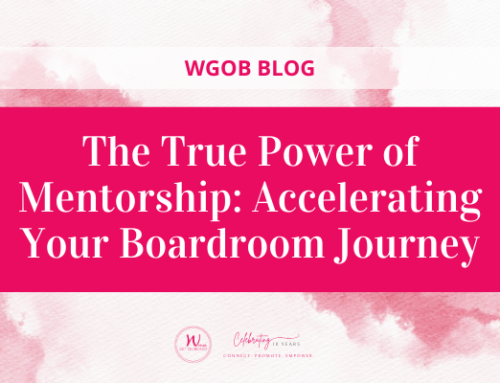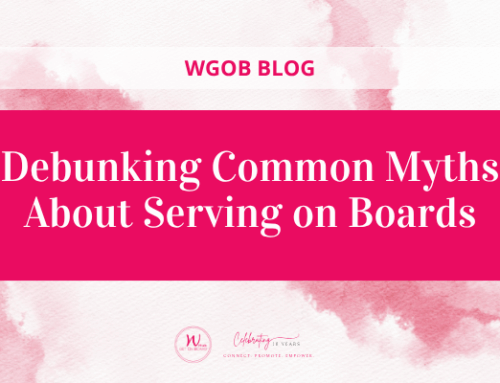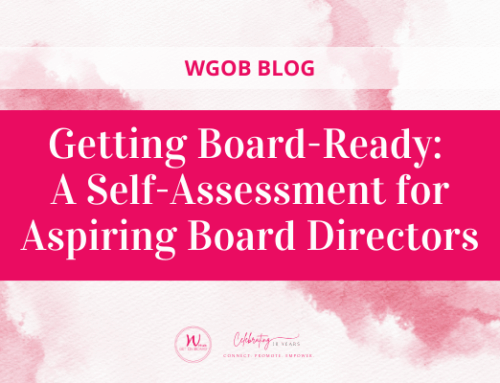
Mary Larson, ICD.D, is a Partner with MNP’s Consulting Services group in Montreal. She is the National Lead of the Organizational Renewal Practice for the Firm, and also co-leads the ESG Service Line. Mary helps clients clarify and build alignment around their strategies, build leadership capacity, and embed cultures that foster outstanding execution. She is board chair of McGill’s School for Continuing Studies, a former board member of Prostate Cancer Canada and vice-president of the University Club of Montreal. She co-founded the International Women’s Forum in Canada.
What ESG trends are you seeing in small and mid- cap companies?
While people are very concerned about ESG, particularly around reporting and compliance, they are only beginning to look at ESG as a business issue for board consideration. This is understandable given the plethora of competing different standards and frameworks that they confront. Organizations can become paralyzed around taking meaningful ESG initiatives because they don’t know which standard to use.
But we’re also seeing boards, CEOs and president/owners of small cap companies beginning to pay attention to ESG not just as a risk-based reporting issue, but as a set of meaningful business issues that also carry the opportunity for competitive advantage. When boards and CEOs begin to dig into the business side of it, it becomes less daunting. ESG becomes a strategic and cultural issue, which is much more interesting and requires serious attention.
What key building blocks must be in place to flip from viewing ESG through a reactive compliance lens to seeing it as a basket of strategic opportunities?
The board and management team need to step back and consider the boundaries of their business activities and the degree to which ESG-related issues are important to the sustainability of the organization. They need to talk to their customers, employees and community representatives — as well as bankers, shareholders and owners – about these matters. Stakeholder insights can be used as a mechanism to decide what they are going to do to address these issues, how they will measure progress and how they will report on them. Those are the things people who buy your goods and services care about. Those are the things that your bank is going to care about. It’s a business issue, not a compliance issue.
Can you take us through a real ESG initiative, and help us understand the process that they followed to get it going?
One of our clients is a large, purpose-led community-based retailer. Their CEO has worked in many countries, and has been concerned about environmental issues, social justice and inclusion for a long time. The leadership felt that ESG could help them focus on the right factors to differentiate them from their competitors, as well as improving the integrity of their supply chain, which is a particular concern for them.
They engaged us to have a conversation with their executive team and provide some insights around what other organizations in the sector were doing around ESG, not only in Canada but also internationally. Then they got their board involved in the discussion. We spent several hours at a board meeting and had a similar discussion — with the executive team present — to gauge the reaction of the board.
The board is very supportive of the initiative, so we have been re-engaged by management to narrow the scope of priorities and develop a set of targets and measures that they can systematically operationalize.
Help me understand how they approached stakeholder engagement. Was it already part of their corporate culture, or was this something new that went outside their comfort zone?
I wouldn’t say it was going outside their comfort zone, because this organization had a social purpose connected with it. They’ve always been good about talking to their employees. But these kinds of conversations with suppliers and customers are probably something that they haven’t really thought about doing in quite that way. There is a huge amount of value in making sure that stakeholder engagement efforts are well organized, thorough, and not perceived as PR. The goal is to really engage in a conversation and find out what’s important to people.
One of the most important things that came out of this process was the conversation between the board and the management team. It enhanced the confidence of the management team that ESG is truly a priority for the company. The second thing that’s come out of it is that the company will be talking to a broad range of stakeholders about the direction it’s going to take. They are looking at engagement as a growth step on their journey. It is important to recognize that we don’t have to be all singing, all dancing at the beginning of the ESG journey. You start somewhere. As long as you’re being clear and transparent about the things that you’re doing and reporting on, you’ll be fine.
How are you seeing organizations align ESG with corporate strategy and reward performance?
The ESG issues that an organization wants to focus on have to be baked into the strategy. There must be set of strategic initiatives that will be actioned and measured. It is early stage in terms of linking CEO compensation to ESG performance, though when we spoke to the Ontario Institute of Internal Auditors Conference last week, more than 10 percent of the participants said that their ESG strategy is tied to CEO compensation. With the exception of employee safety in heavy industry, where CEOs are more likely to be accountable for measurable targets, boards have begun with the culture change aspect of driving ESG. They aren’t necessarily looking at directly rewarding behaviour along measurable cultural lines, although a lot of them said that that was something they felt they wanted to do.
What are some emerging best practices?
Don’t view ESG primarily from the perspective of risk. ESG is an incredibly positive movement. It’s recognizing that many of the things that are risk factors for organizations like avoiding modern slavery, securing healthy supply chains, DE&I and environmental responsibility are critical business issues. Paying attention to value is important from a fundamental business standpoint. My clients look at ESG in a holistic way.
I’m passionate about this topic. We’re in the early stages, and I am thrilled that we have reached a tipping point. I just hope it continues and that more and more companies are going to think strategically about how to tackle ESG.






